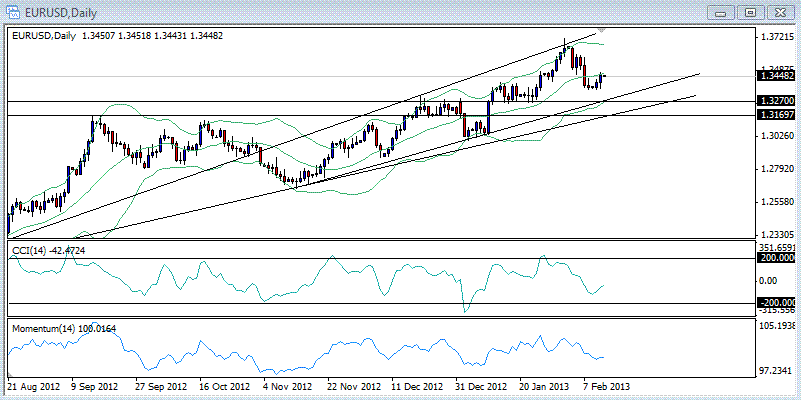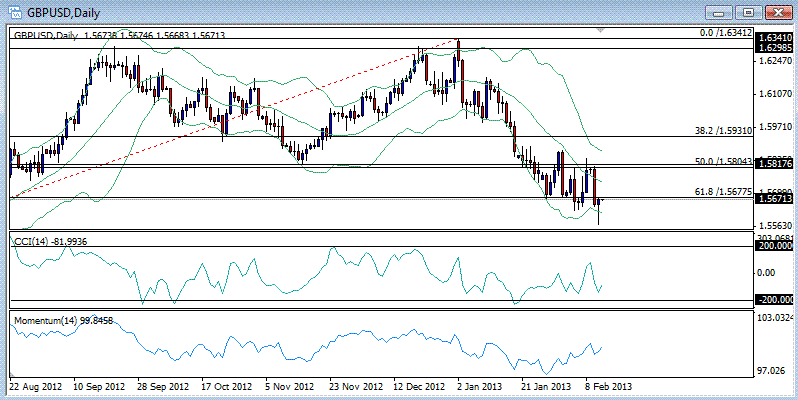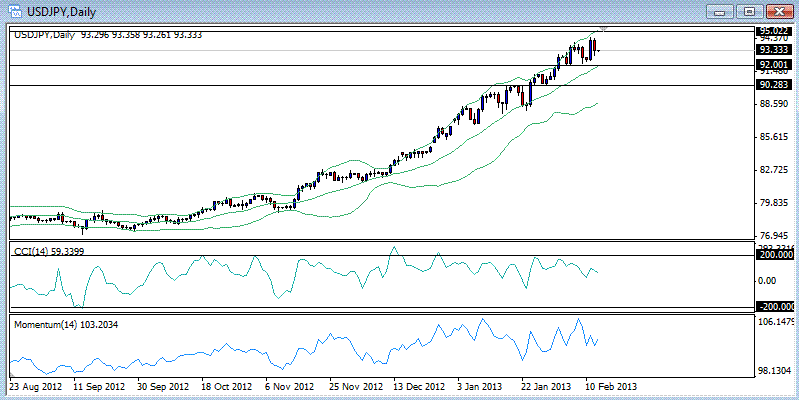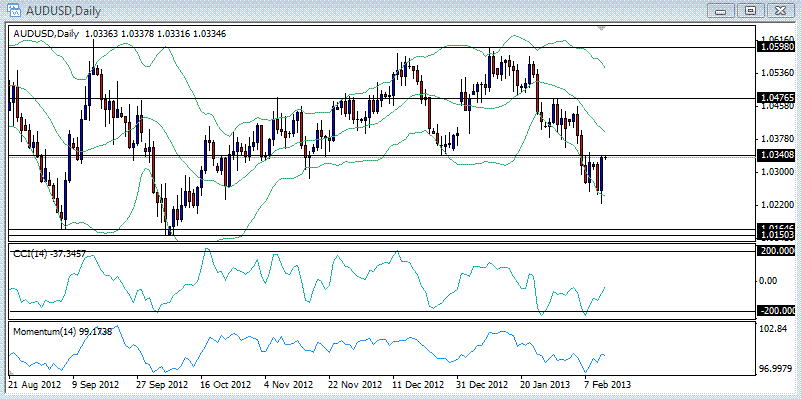EUR/USD Current price: 1.3453
View Live Chart for the EUR/USD
The EUR/USD posted gains during the 2/12 session, pushing above a brief consolidation range that had resistance at 1.3430. However, it is closing the session unable to push above a fallinng channel since February seen in the intra-day charts. A push above 1.35 will probably be needed to bring about some bullish outlook toward the 1.3595-1.36 area, which was a previous pivot.
Support Levels: 1.3271 1.3317 1.3383
Resistance Levels: 1.3495 1.3541 1.3607
GBP/USD Current price: 1.5674
View Live Chart for the USD/JPY (select the currency)GBP/USD pulled back during the 2/12 US session after making new lows for 2013. The bearish outlook still remains with the 1.55 handle, 78.6% retracement and common lows the June-July consolidation period. A break above 1.59 is required to neutralize the bearish outlook.
Support Levels: 1.5489 1.5530 1.5601
Resistance Levels: 1.5713 1.5754 1.5825
USD/JPY Current price: 93.47
View Live Chart for the USD/JPY (select the currency)
The USD/JPY retreated back below 94.00 during the 2/12 US session, but held above 93.00 which maintains the bullish stance. At this point, a slide below 92.00 will be required to show topping action and usher in a bearish correction scenario. Otherwise, the 95.00 area near the 2010 high remains in sight.
Support Levels: 91.21 92.07 92.68
Resistance Levels: 94.15 95.01 95.62
AUD/USD: Current price: 1.0310
View Live Chart for the AUD/USD (select the currency)
AUD/USD pulled back to 1.0320 during the 2/12 session. This was actually an outside bar. After a failed outside bar from last Friday(2/8), this shows a real battle of bulls and bears. It should be noted that during the fall from the 1.06 area, the strongest bullish correction has been above 90 pips but under 100. Today's price action was a 94 pip pullback. A pullback more than 100 pips could be a sign that bears are losing control, especially if there is a push above 1.0350, which opens up the 1.0450-1.0475 resistance pivot area. Otherwise, AUD/USD remains bearish with the 1.0150-1.0165 support area in sight. (As I complete this report, the AUD/USD indeed pushes above the 100-pip pullback mark, so beware of the next challenge in the 1.0450-75 area.)
Support Levels: 1.0150 1.0188 1.0262
Resistence Levels: 1.0374 1.0412 1.0486
Recommended Content
Editors’ Picks
AUD/USD could extend the recovery to 0.6500 and above

The enhanced risk appetite and the weakening of the Greenback enabled AUD/USD to build on the promising start to the week and trade closer to the key barrier at 0.6500 the figure ahead of key inflation figures in Australia.
EUR/USD now refocuses on the 200-day SMA

EUR/USD extended its positive momentum and rose above the 1.0700 yardstick, driven by the intense PMI-led retracement in the US Dollar as well as a prevailing risk-friendly environment in the FX universe.
Gold struggles around $2,325 despite broad US Dollar’s weakness

Gold reversed its direction and rose to the $2,320 area, erasing a large portion of its daily losses in the process. The benchmark 10-year US Treasury bond yield stays in the red below 4.6% following the weak US PMI data and supports XAU/USD.
Bitcoin price makes run for previous cycle highs as Morgan Stanley pushes BTC ETF exposure

Bitcoin (BTC) price strength continues to grow, three days after the fourth halving. Optimism continues to abound in the market as Bitcoiners envision a reclamation of previous cycle highs.
US versus the Eurozone: Inflation divergence causes monetary desynchronization

Historically there is a very close correlation between changes in US Treasury yields and German Bund yields. This is relevant at the current juncture, considering that the recent hawkish twist in the tone of the Federal Reserve might continue to push US long-term interest rates higher and put upward pressure on bond yields in the Eurozone.



